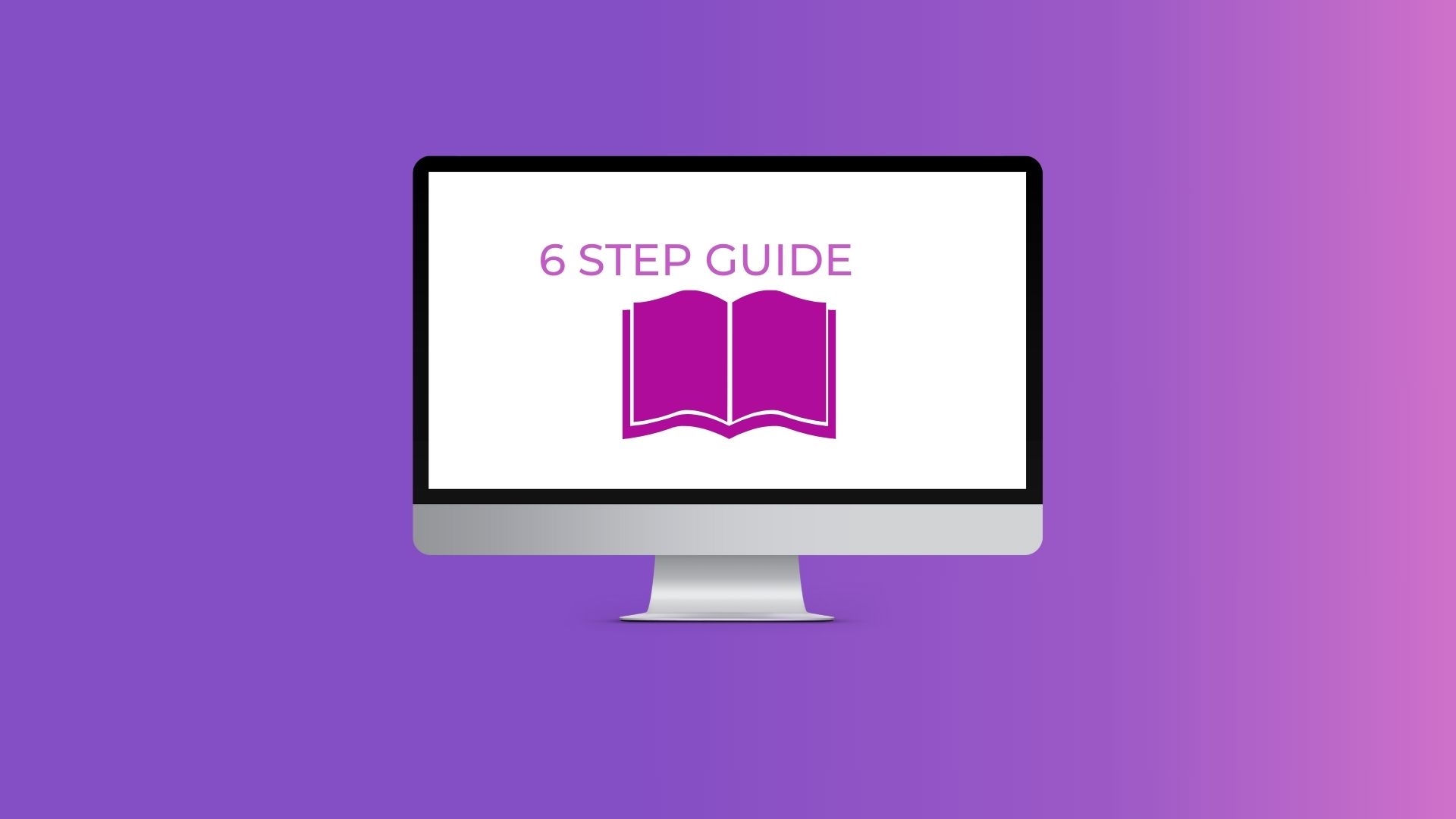How to Do an SEO Audit: A Comprehensive Step-by-Step Guide

What is an SEO Audit and Why is it Important?
An SEO audit is a comprehensive checkup of your website’s performance in search engine results pages (SERPs). It fully examines your ranking factors, including technical, off-page, and on-page SEO.
For example, an eCommerce SEO audit optimizes an online store’s organic search performance. The process follows an SEO audit checklist to boost the store’s ranking on search results. You identify broken links, duplicate content, missing keywords, and other website issues.
You can find the key benefits of a site audit below:
- Increase your site’s organic traffic
- Make the experience smooth and enjoyable for your website visitors
- Optimize keyword usage to maximize high-ranking keywords
- Attract valuable backlinks from authoritative websites
Most importantly, you gain a competitive advantage, which is key in ranking on search results.
Preparing for an SEO Audit: Essential Tools and Goals
Equip yourself with the right tools and goals before starting an SEO site audit.
Best SEO Audit Tools and Resources
You don’t have to do the audit manually. There are startup and enterprise SEO tools you can use for auditing your website.
Here are paid and free tools for doing a complete SEO audit:
- Google Analytics: Google Analytics is a free tool for tracking search traffic and user behavior. Here’s a quick guide to the new Google Analytics 4.
- Google Search Console: Google Search Console (GSC) is also a free site audit tool. Here, you can identify technical SEO issues like site crawl errors and broken internal links.
- Semrush: Semrush offers a site audit platform that checks all your pages. It offers a free trial, but you have to pay to access its full features.
- Ahrefs: Ahrefs offers a free site audit platform for technical and on-page SEO issues. It also checks all web pages and visualizes important recommendations.
- Screaming Frog SEO Spider: This platform is a site crawl tool. It can crawl 500 URLs for free, then you have to pay a subscription if you need more.
Among these SEO audit tools, we recommend trying Google Search Console and Google Analytics first. These are free tools that provide essential data for a website audit.
Setting Clear Objectives for Your SEO Audit
Goal-setting is essential in creating your SEO audit checklist. Are you focused on optimizing content like most SEO professionals? Or maybe you’re prioritizing your Core Web Vitals (CWV) and technical health?
Here is a quick list of possible audit goals for each SEO focus area:
- Technical SEO: Broken links, internal links, and site speed
- On-page SEO: Keyword research, image optimization, and meta descriptions
- Off-page SEO: Brand mentions and backlink analysis
- Content optimization: Content relevance and existing content reformatting
An SEO audit template could also focus on running an SEO competitor analysis. This allows you to benchmark your site’s performance against your biggest competitors. Imitate your competitors’ effective strategies and look for content gaps that you can address.
Conducting a Technical SEO Audit: Key Elements to Check
Consider these essential SEO aspects in evaluating the technical health of your website.
Analyzing Site Architecture and Crawlability
When users navigate your site, you want to make the experience enjoyable for them. It’s not just for the benefit of site visitors, though. A proper site structure helps search engines understand your website better.
From your internal links to your navigation menu, everything should be straightforward. Here are key elements in auditing your site hierarchy and crawlability:
- Offer a logical and intuitive structure. Group your pages into categories and subcategories. Archive pages that are not in use.
- Aim for a descriptive but concise URL structure. Search engines quickly index pages with descriptive and categorized URLs. Include your primary keywords, but don’t do keyword spamming.
- Check the relevance and accessibility of your internal links. Make sure that in–article links are related to the page content. Include links to high-ranking page titles to distribute authority juice to other pages.
These tips increase your website’s crawlability. It maximizes your crawl budget, helping you rank higher in the first page of search results.
Evaluating Mobile-Friendliness
Mobile devices accounted for more than half of the global website traffic in 2023. That says a lot about the importance of mobile optimization as an SEO priority.
Preparing your website for mobile consumption requires prioritizing these aspects:
- Responsive design to any screen size
- Large, readable elements for a touch-friendly interface
- Fast page speed
- Clear navigation menu
Google Search Console is one of the best platforms for evaluating mobile responsiveness. You can also leverage these tools in checking your core web vitals, including mobile speed:
- SE Ranking Mobile Friendly Site Test
- Small SEO Tools Mobile-Friendly Test
- Microsoft Bing Mobile Friendliness Test Tool
We recommend moderating the use of multimedia elements and ads on your own site. These elements are very heavy and could affect your speed and responsiveness.
Page Speed and Performance Optimization
Loading speed is a primary factor in your core web vitals. Search engines prioritize websites with fast loading speed.
Plus, you know the annoying feeling when you click on a slow-loading website? If your site is like that, you’re more than likely to lose visitors and potential conversions.
That’s why you always try to optimize your page speed to avoid missed traffic and engagement. Have a look at these actionable tips:
- Compress images to reduce file sizes. Tools like TinyPNG compress your images while retaining their quality.
- Reduce more file sizes through code minification. Google Closure Tools can minify your HTML, CSS, and JavaScript codes.
- Invest in a powerful hosting service. A powerful hosting provider prevents website downtime even during massive surges in traffic.
You can use Google PageSpeed Insights and GTmetrix to test your website speed. These tools evaluate your speed on Google and other search engines.
Ensuring Indexing and Accessibility
Do you want to know if your important pages, like landing pages, are indexed by Google? You can rely on SEO audits through Google Search Console.
Go to the Page Indexing report in Google Search Console. There, you can find indexing issues that might be pulling down your organic traffic.
Along with index status, here are other ways you can improve your website’s accessibility:
- Configure your robots.txt file to prioritize essential pages. Maximize your crawl budget by blocking pages that are less important.
- Submit an XML sitemap to Google Search Console. Regularly update your XML sitemap, especially if there are changes in your site architecture.
- Ensure accessibility to all users, including people with disabilities. We recommend adding an image alt text, along with clear tags on your headings.
Don’t overlook indexing and accessibility. These are essentials in your core web vitals, which are ranking factors in search results.

On-Page SEO Audit: Content and Keywords
Optimizing your on-page strategies is key for targeting your audience’s search intent.
Keyword Analysis and Optimization Techniques
Most SEO evaluations focus on keyword optimization. How can you optimize your target keyword to increase organic traffic?
It’s not just about identifying the correct target keywords. It’s also about how you place them on your pages.
Here’s how an SEO audit can leverage your keywords:
- Identify long-tail keywords. These keywords have lower search volume but present more opportunities to rank higher.
- Keyword placing is the key. Place keywords on your image alt texts, headings, title tags, and meta descriptions.
We also recommend constant tracking of your keyword performance. Use Google Search Console to see if your keywords are ranking in organic traffic. You can also check your competitors’ keywords to discover keyword and content gaps.
Evaluating Content Quality and Relevance
Trends in SEO strategies come and go. What is the one thing that has maintained its essence? Your content playbook, of course.
Content remains the king in any digital marketing venture like SEO. An SEO audit can help assess your content’s performance, particularly in these key areas:
- Check your content originality. Use tools like Copyscape or Siteliner to ensure that your content is unique and original. Plagiarism could lead to a penalty and even a ranking drop.
- Evaluate the relevance and timeliness of your content. AnswerThePublic is an excellent tool for discovering trending queries in your market.
Most importantly, focus on content that helps solve your audience’s pain points. Google rolled out a helpful content update to encourage websites to focus on valuable content.
Optimizing Meta Tags, Descriptions, and Headers
Your meta tags and headers make it easier for search engine bots to crawl your website. The more descriptive your tags are, the quicker it is for these bots to index your web page.
Higher user engagement and click-through rates are also the result of optimized meta titles and descriptions. Here are proven practices for auditing your meta tags:
- Keep them clear and concise. For title tags, limit them to only 50-60 characters. For meta descriptions, use only 155-160 characters.
- Use different formats of headers to indicate sub-categories. A title is usually attributed the H1 tag. An H2 tag is given to topical categories, while the H3 tag is for sub-categories.
Try optimizing your tags through schema markup. Use Google’s Rich Results Test and Schema Markup Validator to optimize for rich snippets.
Off-Page SEO Audit: Building Authority
Building your website credibility requires a thorough off-page evaluation of your SEO tactics.
Analyzing Backlink Profile Quality and Relevance
Black-hat or spammy SEO tactics will not cut it on organic search. Google enforces spam policies that punish websites with low-quality, irrelevant backlinks.
Remember this: how your pages rank is a ranking factor by itself.
If you’re using spammy strategies, you’ll be hurting your performance in the long run. We recommend these tips to ensure that you comply with Google’s guidelines:
- Focus on relevance in getting backlinks from high-authority sites. You should have a similar content or audience with that same site.
- Disavow low-quality links that point to your website. Use Google Search Console’s Disavow Tool to identify and disavow toxic backlinks.
Also, refrain from placing external links to low-authority or spammy websites. This could hurt your domain authority as well.
Social Media Integration and Engagement
Our off-page SEO guide recommends the importance of a social media presence. Most people now use social media as a hub for messaging, getting news, and shopping.
Here are actionable tips for measuring your social media engagement:
- Monitor your brand mentions and sentiment. You can use social listening tools like Brandwatch to check how people are talking about you. Always respond to these mentions to increase exposure and engagement.
- Update your social media accounts. Ensure that you have accurate business information on your social channels to maintain consistency.
SEO checkups also measure the performance of your ad campaigns on social media. Evaluate your paid ads for their ad quality, reach, impression, and conversions.

Local SEO Audit: Optimize for Local Search Success
Attract the attention of high-intent users and drive more revenue through local SEO. Implementing local SEO best practices can help improve your visibility in search results and ensure your business appears in relevant local searches.
Ensuring Consistency in Local Listings and Citation
Most businesses and stores have websites these days. What do they use their websites for? They leverage search results to increase brand awareness among their local target audience.
One way to reach your local audience is through online listings and directories. These directories increase your exposure, especially if they’re trusted by search algorithms.
Here are tactics that can boost your chances of being cited on local listings:
- Use localized keywords that leverage location. Try to rank for keywords with specific locations and landmarks. Examples of these keywords include “near me” phrases.
- Monitor user-generated content (UGC). UGC could come in the form of customer reviews, testimonials, and feedback. Leverage social listening tools and respond to these reviews as well. Ensure that the external links pointing to your website are correct.
- Optimize for voice search through conversational keywords. More people are using voice search through their smartphones. Your pages should include conversational keywords like long-tail phrases and queries.
Most importantly, ensure that you’re cited by authoritative and credible directories. Check their domain authority to see if they’re not just a low-quality, spammy website.
Google My Business Profile Optimization
Don’t forget to get your business listed on Google. As a company or organization, you get a free business profile through Google My Business.
Through Google My Business (GMB), you can update your business information on both Google Search and Google Maps. This makes it easier for potential customers to find your business, especially if you have a land-and-brick store.
Your GMB profile should be complete with these essential information:
- Official business name
- Up-to-date company address
- Primary phone number and email address
- Operating hours of your business, including special hours on holidays and weekends
- High-quality photos of your store, products, and team members
- Customer reviews and feedback
The key here is to provide accurate and up-to-date information about your company. Imagine a customer going to your stated address only to find a vacant lot. That could taint your brand image and strip you of potential revenue.
Analyzing and Reporting SEO Audit Findings
It’s not just about the broken links and missing keywords that you discover. The question is, what would you do with your findings? How will you develop actionable insights from your audit?
Your next challenge is to craft a detailed SEO audit report. A well-structured report serves as a guidepost for your current campaign and your next audit. Here are a couple of practical tips for reporting your audit findings:
- Create a detailed SEO audit report. Your report should include an executive summary of your technical SEO, keyword, backlink profile, and social media analysis. It should also be complete with a competitor analysis to identify benchmarks and content gaps.
- Prioritize SEO actions based on impact. SEO takes heavy patience, but you can see progress by taking small incremental steps. Focus on straightforward tasks such as fixing broken links and improving loading speed. Taking these small steps will help you climb up the ladder.
Another practical tip is to use a project management tool for your SEO journey. Tools like Asana or Notion help you track your progress and communicate with team members. Plus, your documents and conversations are in one hub for easier project management.
Most importantly, be ready to apply changes when necessary. The audit will be useless if you don’t adjust your SEO strategies right away. Communicate the issues to your teams and have them prepared for immediate SEO adjustments.

Fortis Media’s Expertise in SEO Auditing
Are you worried that you’re not yet knowledgeable in SEO auditing? Don’t worry; businesses often outsource these tasks to search marketing agencies like us. These experts have inside knowledge of search algorithms, helping your future-proof your SEO playbook.
So, how exactly does a search marketing agency audit your SEO performance? How could you be sure that they are experts in what they do?
Take, for example, how we customize their SEO auditing services. Have a look:
- Tailored SEO Solutions: First of all, SEO auditors should cater to businesses of different sizes. We have worked with startups, medium-sized organizations, and enterprise companies. This experience allows them to anticipate SEO trends that might influence your market.
- Comprehensive Search Marketing Services: we aren’t just auditors; they are SEO experts. Their expertise expands to link-building, paid search ads, content marketing, and digital PR. This way, you’re certain that their audit report includes every important detail.
An external SEO audit is necessary to get an unbiased performance perspective. This way, you get actionable insights that your website really needs. Just make sure that you work with SEO auditors who have previous experience in your niche.
Key Takeaways
An effective SEO audit could take weeks or months to complete. You might even have to do it four times in one year to keep up with algorithm changes.
It says that patience and attention to detail are necessary in SEO auditing. It is a thorough checkup of your website’s technical health, content strategy, and backlink profile. These are important ranking factors that you cannot overlook.
If you lack in-house expertise, you can always work with search marketing agencies. SEO experts like Fortis Media have audited websites that are currently successful in their niche. Just communicate your goals and apply the insights suggested in their SEO audit reports.
FAQs
How often should I perform an SEO audit on my website?
Typically, websites do a quarterly audit of their Search Engine Optimization (SEO) performance. This is recommended for most websites, especially those that are competing in high-volume niches. It’s also important to optimize your website when search engines like Google roll out updates to their algorithms.
What’s the difference between a technical SEO audit and a content audit?
A technical audit for SEO examines aspects that influence crawlability and indexability, while a content audit prioritizes your site’s content quality and keyword research. Technical SEO fixes back-end issues of your website, while content audits optimize the value of your blog posts, product pages, and articles.
How long does an SEO audit typically take?
For small to medium-sized websites, an SEO audit can take two to four weeks. For large-scale or enterprise websites, a thorough audit could take six weeks or more. Key factors that affect SEO auditing duration include website complexity, data collection and analysis, and action planning.
Do SEO audits include checking for penalties from search engines?
Yes, SEO audits involve a thorough evaluation of a website’s compliance with the policies and regulations of search engines like Google. These audits identify spammy or malicious actions like low-quality backlinks, keyword stuffing, duplicate content, and other black-hat tactics that violate the webmaster guidelines.
Is an SEO audit necessary for a new website?
Yes, SEO audits are necessary for new websites to avoid potential issues and missed traffic. Evaluating your new website’s technical and on-page health ensures that you follow the guidelines set by Google and other major search engines. This is a more cost-effective strategy than fixing existing issues on your website.
Read our other articles

Google March 2025 Core Update: iGaming Industry Impact with Real Cases


Benefits of Enterprise SEO: Why Large-Scale Businesses Need It


B2B SaaS SEO: Best Practices and Strategy for 2025






